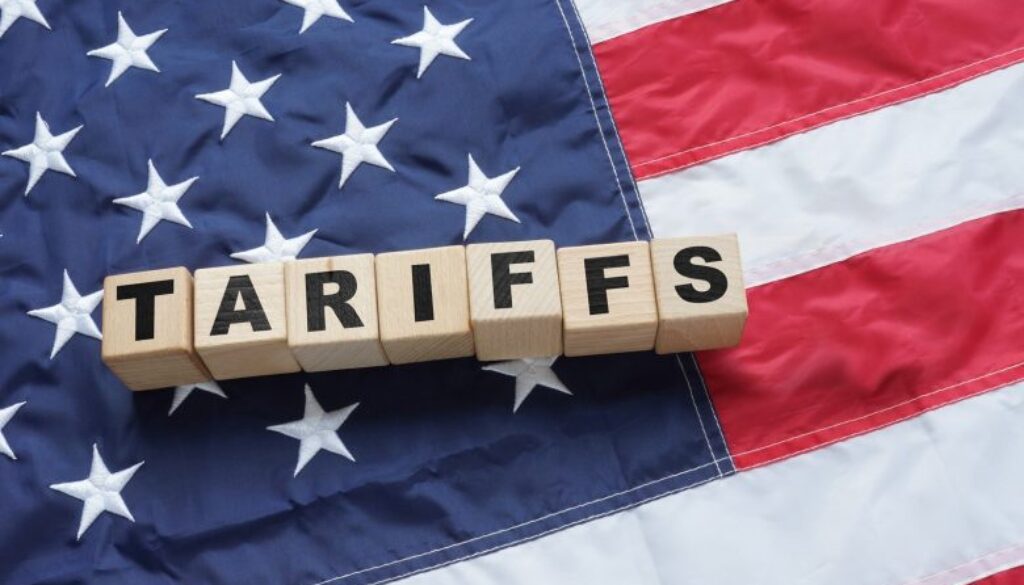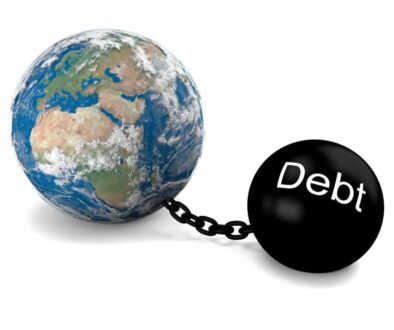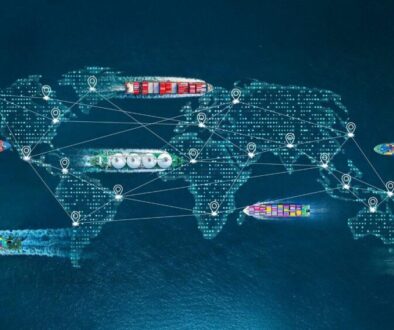BY DR SOHA MAAD
Introduction
New world alliances are rising in face of Tariffs policy by United States President Donald Trump. Trump’s tariffs policy have reshaped the global trade landscape, prompting new geopolitical powers to emerge and adapt. The Samarkand Summit, held in April 2025, marked a significant milestone in European Union EU-Central Asia relations.
The broader impact of Trump tariff policy is complex. While it can generate significant revenue and potentially protect certain domestic sectors, it also bring ramifications for international trade relationships, global market stability, and ultimately, consumer prices. Trump Tariff policy will affect industries, influence the global supply chain dynamics, and reshape international trade agreements.
This article sheds light on Trump Tariff policy and its global impact at markets, industries, and consumer goods levels. The article also analyses the reaction of various countries with particular focus on Arab countries and the EU, and the outcome of EU-Central Asia Samarkand Summit. The article concludes with a roadmap and strategies for Arab countries to address challenges ahead from the long-term impact of Trump Tariff policy.
Donald Trump Tariff Policy
US President Donald Trump has placed 125% tariffs on goods imported from China, leading Beijing to respond with an 84% tax on American products. Trump had also brought high tariffs on dozens of other countries but these have been suspended for 90 days. He argues that tariffs will boost US manufacturing and protect jobs, but the world economy has been thrown into chaos and prices are expected to rise for consumers.
At its core, the rationale behind employing tariffs is to rebalance trade by levying taxes on imported goods, ideally encouraging domestic production and counteracting what is seen as unfair foreign trade practices. However, economists warn that these taxes also tend to raise consumer prices, contribute to supply chain disruptions, and may trigger retaliatory measures from affected countries. While Trump Tariffs are portrayed as a way to force negotiations and protect American industries, they also risked deepening global economic uncertainties and setting the stage for a broader trade confrontation, particularly with China, whose targeted tariff increase underscores the severity of bilateral tensions.
Historical Tariff Policies In The US
Historically, US tariff policies have swung between protectionism and free trade, depending on the economic and political climate. Since the mid-20th century, the US shifted towards trade liberalization, with agreements like the General Agreement on Tariffs and Trade (GATT) and the establishment of the World Trade Organization (WTO) reducing global tariffs. Trump’s tariffs, by contrast, represent a significant departure from this trend, aiming to renegotiate trade deals and address perceived imbalances, particularly with China.
While historical tariffs were often sector-specific, Trump’s policies have targeted a broader range of goods and countries, causing widespread economic uncertainty. This approach has drawn comparisons to the protectionist policies of the early 20th century but with a modern twist of using tariffs as a negotiation tool.
Worldwide Impact Of Trump Tariff Policy
Trump’s tariffs have sent shockwaves through the global economy, disrupting trade relationships and sparking retaliatory measures. Countries like China have imposed steep counter-tariffs, while others, such as the European Union, have approved measures targeting US exports. These actions have led to increased costs for businesses and consumers worldwide, with some industries struggling to adapt to the new trade landscape.
The tariffs have also contributed to market volatility, with significant losses in global equity value and fears of a potential recession. While some nations are negotiating exemptions or reduced tariffs, the overall impact has been a mix of economic strain and strategic recalibration.
The ripple effects are reshaping international trade dynamics, with countries reassessing their economic policies and alliances.
World Industries Hit By Trump Tariff
Trump’s tariffs hit several industries hard, both in the US and globally. Key sectors affected include:
- Automotive: Tariffs on steel and aluminum have increased production costs for car manufacturers, impacting both domestic and international markets.
- Technology: Electronics and machinery, heavily reliant on imports from China, have faced higher costs due to steep tariffs.
- Agriculture: Farmers have struggled with retaliatory tariffs from other countries, reducing export opportunities for crops like soybeans and corn.
- Construction: Materials like lumber, steel, and concrete have become more expensive, exacerbating housing affordability issues.
- Consumer Goods: Items like clothing, appliances, and smartphones have seen price hikes, affecting everyday consumers.
Trump tariffs have disrupted supply chains, raised costs, and led to retaliatory measures from trading partners. The ripple effects are reshaping global trade dynamics and forcing industries to adapt.
Impact On US Industries
US industries have felt a broad range of effects from Trump tariffs, with impacts rippling across raw material costs, supply chains, and production strategies.
Cost Increases and Supply Chain Disruptions: Tariffs were designed to make imported goods more expensive and thereby promote domestic production. However, for many US industries this has translated into significantly higher costs for input materials. The steel and aluminum sectors provide clear examples of how tariffs can unpredictably alter industry dynamics. Although tariffs were meant to protect domestic production by curbing cheap imports, many manufacturers have struggled with supply chain adjustments and higher raw material prices. In some cases, domestic production capacity did not kept pace with demand, forcing companies to continue sourcing at costly rates despite the protective measures.
Beyond individual sectors, the cumulative impact of increased production costs is contributing to broader economic pressures. With tariffs elevating raw material prices across the board, manufacturers find themselves squeezed by thinner profit margins. In turn, higher costs can ultimately cascade to consumers through increased prices, potentially dampening demand in a competitive global market.
The complex interplay of these factors means that while some industries might adjust through innovations or new sourcing strategies, others, especially those with less domestic capacity or in highly competitive markets, experience significant business uncertainties. This situation has led to an environment where US industries must continuously balance the goals of protecting domestic jobs and maintaining international competitiveness.
Markets Hit By Trump Tariff
Trump’s tariffs have deep impact on global financial markets, triggering swift and severe bouts of volatility. When the tariffs were first announced and then adjusted, most notably with the decision to impose a steep 125% rate on Chinese goods and a baseline 10% rate on a host of other countries, markets reacted sharply. In the immediate aftermath, the stock market experienced record losses; some reports noted that trillions of dollars in equity value evaporated over just a few trading sessions, marking one of the worst periods in market history.
This sudden market shock was driven by mounting uncertainty. Investors quickly re-evaluated risk exposures amid fears of a prolonged trade war and disrupted supply chains, leading to a flight toward safer assets such as government bonds. This rebalancing disrupted not only equity markets but also bond markets and commodities, as market participants recalibrated their portfolios for a more volatile environment.
Moreover, the initial panic forced central banks and policymakers to consider emergency measures. Although a 90-day pause was later announced for most trading partners (except China), the damage in sentiment had already been done. The uncertainty surrounding future policy moves compounded the challenges, as markets grappled with the dual pressures of geopolitical tensions and economic slowdown prospects.
Trump’s tariffs have acted as a catalyst for widespread market disruption. They have redefined risk perceptions globally, forced companies to rethink supply chains and investment strategies, and spurred policymakers to consider unprecedented interventions to restore market stability.
Impact On Consumer Goods
The recent tariffs imposed by Donald Trump have significantly impacted a wide range of goods:
- Automobiles: Imported cars and vehicles with foreign parts are facing higher costs due to a 25% tariff on auto imports.
- Clothing and Shoes: With 97% of apparel and footwear in the US being imported, tariffs on countries like China, Vietnam, and Bangladesh are driving up prices.
- Electronics: Items like computers and phones, heavily imported from China, are seeing price hikes due to a 125% tariff on Chinese goods.
- Steel and Aluminum: Tariffs on these materials are affecting industries reliant on metal imports.
- Pharmaceuticals: Previously exempt, these products are now subject to new tariffs, potentially disrupting supply chains.
These measures have caused ripple effects across global markets, with businesses and consumers bracing for higher costs.
Long Term Impact
The long-term impact of Trump’s tariffs has been profound, reshaping global trade dynamics and economic strategies. While the tariffs aimed to protect American industries and reduce trade deficits, they have had mixed outcomes. The tariffs increased costs for US businesses reliant on imported goods, leading to higher consumer prices and reduced disposable income. This has contributed to slower Gross Domestic Product GDP growth and inflationary pressures.
Companies have restructured supply chains, moving production to countries like Vietnam, India, and Mexico to avoid tariffs. This has permanently altered global manufacturing and trade patterns.
Countries like China and the EU imposed counter-tariffs, affecting US exports and creating trade tensions that persist today.
The tariffs accelerated a move towards protectionism and strained US relations with key trading partners, reshaping alliances and trade agreements.
These effects highlight the complexity of using tariffs as a policy tool, with both intended and unintended consequences.
Impact On EU
Trump’s tariffs have had significant repercussions for the European Union (EU), affecting trade, industries, and diplomatic relations. The EU has faced a 20% tariff on most goods exported to the US, along with 25% tariffs on steel, aluminum, and automobiles. These measures have increased costs for EU exporters, making their products less competitive in the US market.
In response, the EU has implemented retaliatory tariffs of 25% on a range of US goods, including agricultural products, motorcycles, and beauty items. This has escalated trade tensions and caused uncertainty for businesses on both sides. Additionally, industries like pharmaceuticals and food and beverage in EU countries such as Ireland have been particularly hard-hit, with reduced competitiveness and potential job losses.
The broader impact includes strained diplomatic ties and a reevaluation of trade strategies within the EU. The EU is exploring ways to mitigate these effects, such as diversifying trade partnerships and negotiating exemptions.
Impact On Arab Countries
Trump’s tariffs have had varied impacts on Arab countries. Saudi Arabia, the United Arab Emirates UAE, and Qatar, faced a 10% tariff on their exports to the US, which is relatively low compared to other regions. However, countries like Syria, Iraq, and Algeria were hit with much higher tariffs, ranging from 30% to 41%, due to perceived trade imbalances.
For Gulf Cooperation Council GCC countries, the exemption of oil and gas exports from tariffs provided relief, as these sectors are critical to their economies. However, non-energy sectors like electronics, automobiles, and consumer goods have faced increased costs, potentially reducing competitiveness. In contrast, countries with higher tariffs, such as Jordan and Tunisia, have struggled with rising inflation and slower economic growth.
The broader impact includes strained trade relations and a reevaluation of economic strategies across the region. Arab countries are exploring ways to diversify trade partnerships and strengthen ties with unaffected regions to mitigate these challenges.
World Response To Trump’s Tariffs
Countries have reacted to Trump’s tariffs in varied ways, ranging from retaliation to negotiation. For instance, China has implemented retaliatory tariffs of up to 34% on US imports, while the European Union has approved countermeasures targeting $23.2 billion worth of US exports. Meanwhile, nations like Japan and India are seeking to negotiate exemptions or reduce their own tariffs in response to Trump’s reciprocal tariff policy. Some countries, like Australia, have opted against retaliation, emphasizing the importance of avoiding economic escalation. These responses highlight the global ripple effects of Trump’s trade policies, with nations balancing economic interests and diplomatic strategies.
Arab Countries Response To Trump Tariff
Arab countries have responded to Trump’s tariffs with a mix of negotiation and strategic adaptation. Gulf Cooperation Council (GCC) nations, including Saudi Arabia and the UAE, faced relatively low tariffs of 10% on their exports to the US, which minimized direct economic impact. However, these countries have focused on maintaining strong trade ties with the US, leveraging their oil and gas exports, which were exempt from tariffs. Other Arab nations, such as Jordan and Tunisia, faced higher tariffs, up to 28%, on certain goods, leading to economic strain and inflationary pressures. These countries have explored diversifying trade partnerships and strengthening regional cooperation to mitigate the effects. Overall, the response has been pragmatic, with Arab countries balancing economic interests and diplomatic relations.
Rise Of New World Geopolitics And Global Powers
Trump’s tariffs have significantly altered the global geopolitical landscape, triggering shifts in power dynamics and trade alliances. The tariffs have disrupted traditional trade relationships, forcing countries to reassess their economic strategies and partnerships.
Nations like Vietnam, India, and Mexico have gained prominence as alternative trade hubs, attracting investments and diversifying supply chains away from tariff-affected regions like China. Meanwhile, Russia has positioned itself as a potential beneficiary, leveraging its exemption from certain tariffs to strengthen its geopolitical influence.
The tariffs have strained US relations with key allies, including the European Union and Japan, leading to retaliatory measures and a re-evaluation of trade agreements. The EU, for instance, has explored counter-tariffs and new trade partnerships to mitigate the impact. The disruption has accelerated a shift towards regional trade agreements and localized supply chains. This trend challenges the traditional model of globalization and emphasizes strategic decoupling from major powers like the US and China.
Countries and regions are forming strategic collaborations to counter the impact of Trump’s tariffs. For example, South Korea, Japan, and Taiwan are exploring a joint venture in the US Alaska liquefied natural gas (LNG) project. This initiative aims to strengthen economic ties with the US while reducing trade imbalances.
Additionally, regional partnerships like the Comprehensive and Progressive Agreement for Trans-Pacific Partnership (CPTPP) are gaining traction. Nations are leveraging such agreements to expand markets and mitigate the effects of tariffs. These efforts highlight the importance of unity and innovation in navigating the challenges posed by aggressive trade policies.
Strategic Eu Alliances To Face Trump Tariff
The European Union (EU) has adopted a strategic and unified approach to counter Trump’s tariffs, emphasizing collaboration and resilience. One key initiative is the development of the Anti-Coercion Instrument, which allows the EU to impose retaliatory measures such as export controls, restrictions on intellectual property rights, and duties on digital platforms. This tool is part of the EU’s broader strategy of “open strategic autonomy,” aimed at deterring economic coercion and protecting its interests.
Additionally, EU trade ministers have convened extraordinary meetings to finalize countermeasures, focusing on unity and solidarity among member states. These discussions have highlighted the importance of recalibrating trade policies to navigate the paradigm shift in international commerce.
The EU’s response also includes leveraging existing frameworks like the Enforcement Regulation to address trade imbalances and ensure fair practices. These measures reflect the EU commitment to maintaining a balanced and measured approach while safeguarding its economic model.
New Alliances At Samarkand Summit
The Samarkand Summit, held on 3 to 4 April 2025, marked new alliances between European Union EU and Central Asia. Hosted in Uzbekistan, the summit brought together leaders from the EU and five Central Asian countries, Kazakhstan, Kyrgyzstan, Tajikistan, Turkmenistan, and Uzbekistan. The summit focused on strengthening strategic ties, with discussions on green economy, digital transformation, connectivity, and security.
One of the key outcomes was the announcement of a €12 billion investment package under the EU’s Global Gateway initiative, aimed at improving sustainable transport infrastructure, critical raw materials, and green energy projects in Central Asia. The summit also emphasized regional cooperation, rule of law, and civil society, formalized in a Joint Declaration.
The event highlighted Central Asia’s growing strategic importance for the EU, particularly in diversifying supply chains and reducing reliance on major powers like China and Russia. It also addressed pressing issues such as climate challenges and regional stability.
The Samarkand Summit laid the groundwork for strategic partnerships aimed at addressing not only economic challenges but also broader geopolitical risks. Key areas of collaboration include:
- Infrastructure and Connectivity: A major focus was on developing robust transport corridors, such as the Trans-Caspian Transport Corridor, to enhance trade routes and reduce transit times between Europe and Central Asia. This effort is part of broader initiatives to diversify the EU’s supply chains and mitigate risks from global disruptions like those triggered by aggressive tariff policies.
- Investment in Sustainable Sectors: The summit featured announcements of large-scale investments, including a €12 billion Global Gateway Investment Package. This package is earmarked for projects in clean energy, digital connectivity, and the development of critical raw material sectors (key areas that underpin the EU’s green and digital transformation).
- Political and Security Dialogue: Beyond the economic dimensions, the summit underscored the importance of fostering regular high-level political dialogue and security cooperation. This collaboration aims to address shared challenges such as terrorism, cyber threats, and disinformation, reinforcing a multilateral approach to regional stability.
The collaborative efforts at Samarkand represent a deliberate pivot by the EU toward building resilience amid global trade uncertainties and geopolitical tensions, especially in the wake of policies like Trump’s tariffs. By deepening engagement with Central Asia, the EU not only secures alternative pathways for critical goods and raw materials but also furthers its goal of “open strategic autonomy”.
The Samarkand Summit has set the stage for a new era in EU-Central Asia relations, with tangible plans for joint investments and initiatives that span transport, energy, digital transformation, and security. This multi-faceted collaboration is poised to reshape regional dynamics and bolster the collective capacity to navigate an evolving global landscape.
Roadmap for Arab Countries To Face Trump Tariff
Facing Trump’s tariffs requires a mix of strategic adjustments and proactive measures. Key strategies to address the challenge include:
- Diversifying Supply Chains: Companies must shift their sourcing away from heavily tariffed regions like China to alternative markets in Southeast Asia, Eastern Europe, and Latin America. This reduces dependency on a single region and mitigates risks.
- Nearshoring and Onshoring: Businesses should relocate production closer to home or within their own countries. This approach shortens supply chains, lowers transportation costs, and improves regulatory compliance.
- Cost Management: Companies should explore ways to absorb or offset increased costs. This includes reclassifying products to qualify for lower tariffs, passing costs to consumers when possible, or using financial instruments to hedge against price spikes.
- Negotiating Trade Agreements: Arab countries should engage in bilateral negotiations to secure exemptions or reduce tariff rates. This diplomatic approach helps maintain trade relationships while minimizing economic impact.
- Investing in Domestic Production: Some industries are ramping up domestic manufacturing to reduce reliance on imports. This not only avoids tariffs but also supports local economies.
- Exploring New Markets: Businesses should expand into untapped markets to compensate for losses in tariff-affected regions. This diversification helps maintain revenue streams.
These strategies highlight the importance of adaptability and innovation in navigating the challenges posed by Trump tariffs.



